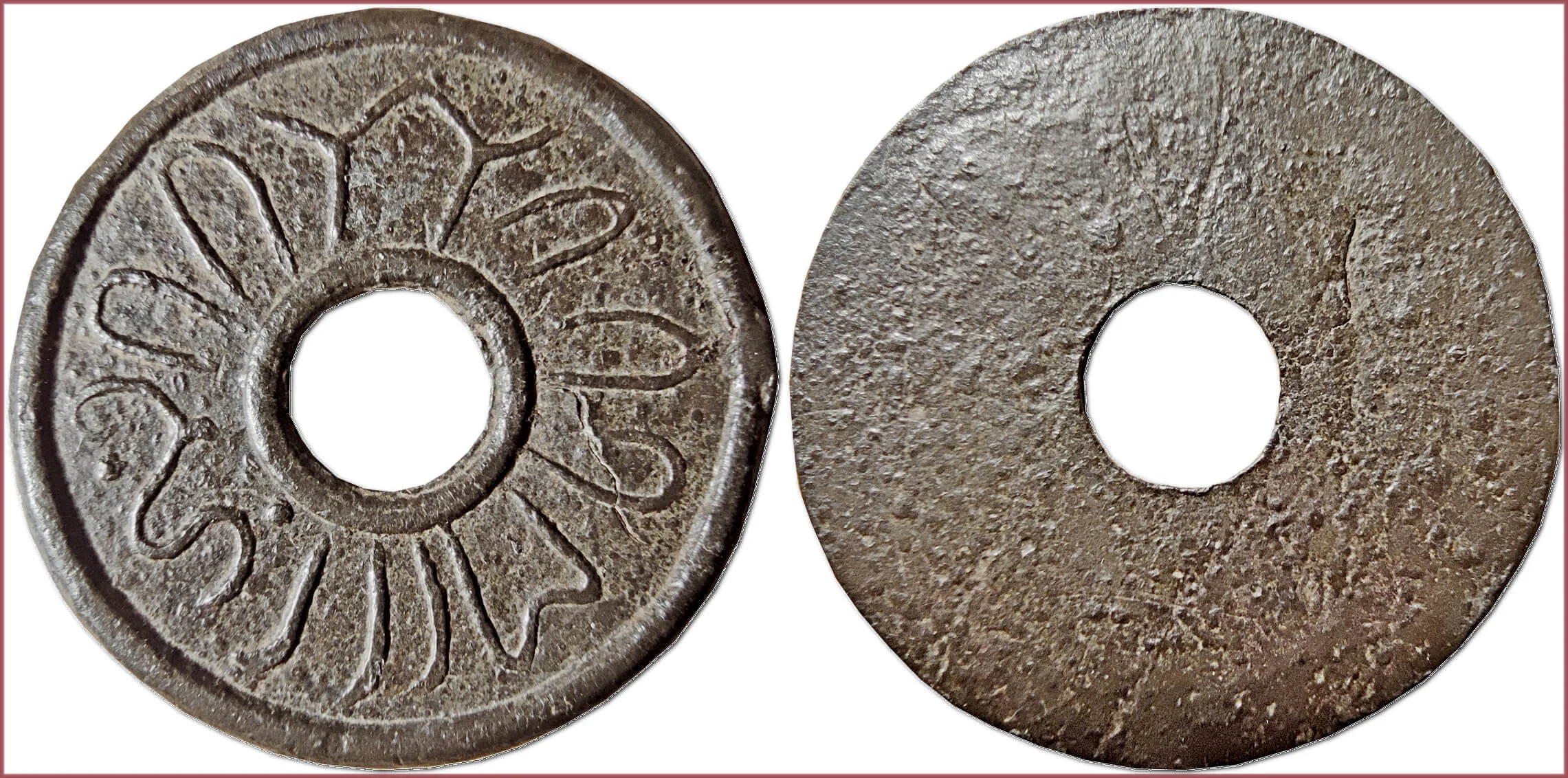PITIS: COIN OF PALEMBANG (INDONESIA)
Pitis, 18th century: Palembang Sultanate (Indonesia)
Uniface coin.
Hole in the center of the coin.
ND (no date).
The legend is made by Jawi script (writing system used for writing several languages of Southeast Asia; Jawi is based on the Arabic script, consisting of all of the original 31 Arabic letters, and 6 additional letters constructed to fit the phonemes native to Malay).
Unfortunately, it was not possible to find exactly such a coin in any specialized catalog (some characters of the text are slightly different). Therefore, I can only assume that the coin contains approximately the following text in an abbreviated format:
- Minted at Palembang Darussalam (Darussalam is an Islamic term which literally means "abode of peace", but also refers to a place where Muslims have a privileged status to practice their religion).
Coins of the presented type were produced by various mints in large quantities with minimal quality control. At the same time, numerous counterfeits of the same quality entered into circulation. Therefore, it is now quite difficult to distinguish original coins from fakes in numismatic collections.
- Tin: 19 mm - 0.94 g
- Reference price: 6$
COIN PITIS — WHERE & WHEN (coins catalog: by names & emitents)
- ISLAMIC STATES OF INDONESIA — Palembang Sultanate, Demak Sultanate, Jambi Sultanate, Sultanate of Siak (15th-19th centuries): pitis = 1/10 keping
- ISLAMIC STATES OF MALAYSIA — Kelantan Sultanate, Malacca Sultanate, Trengganu Sultanate (15th-20th centuries): pitis = 1/10 keping
- BRUNEIAN SULTANATE (17th-19th centuries): pitis
PITIS as coin name. The coin name pitis comes from "picis" (in Mandarin or the northern dialect of Chinese "pei tzü"), which translates to cowrie shell. The shells of these molluscs were widely used as a means of payment in ancient times not only in Asia, but even in Europe.
There is also another version — the origin of the name of the coin from the Southeast Asian plant Sarcolobus globosus (Malay "Buah pitis") whose seed were used as weights in ancient times.
It is interesting that the term is actively used even today: but already to denote cryptocurrency — "Pitis Coin".
Regarding the characteristic features of the pitis coin: it most often had a round hole in the middle and was made of tin by casting. However, alloys of tin with lead as an alloying element were not rare. Varieties with holes were called "pitis teboh", without them — "pitis bountou".
The mass issue of such primitive coins occurred in the 15th-19th centuries, but there are also reports of much earlier issues. The fact is that long before the specified period, the Malay Peninsula was flooded with Chinese bronze cash coins, which were already then called pitis in the mentioned region. Local coins — imitations — appeared quite quickly. Also with holes like their prototype. The only significant difference is the use of tin instead of bronze, the deposits of which on the peninsula are among the largest in the world.

